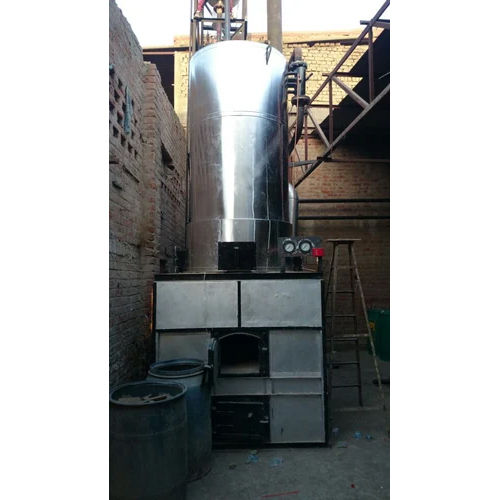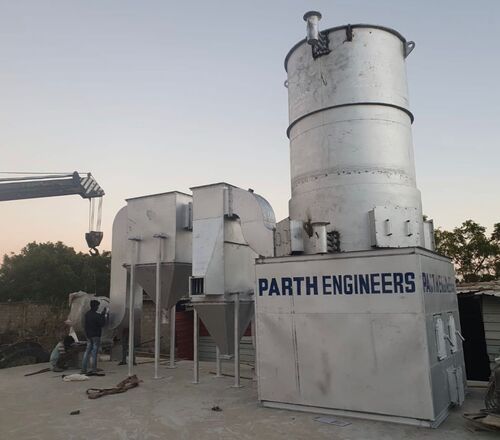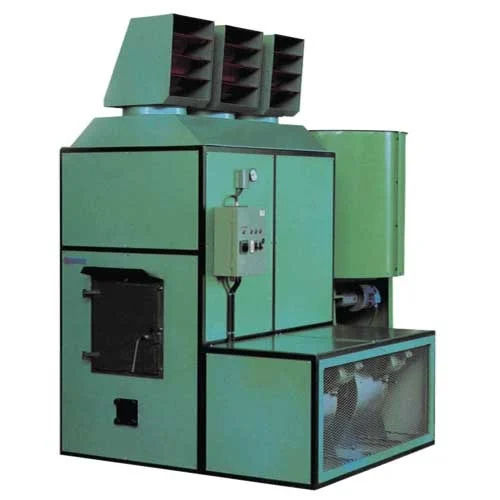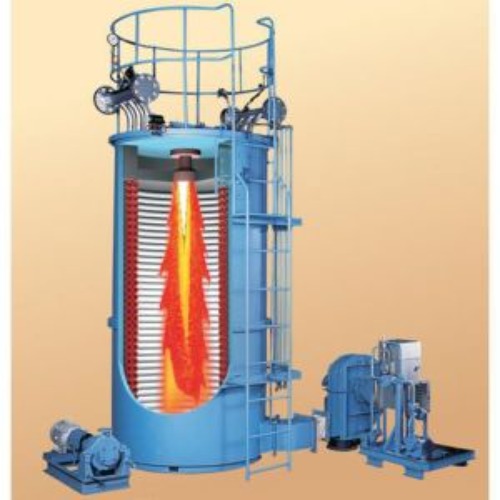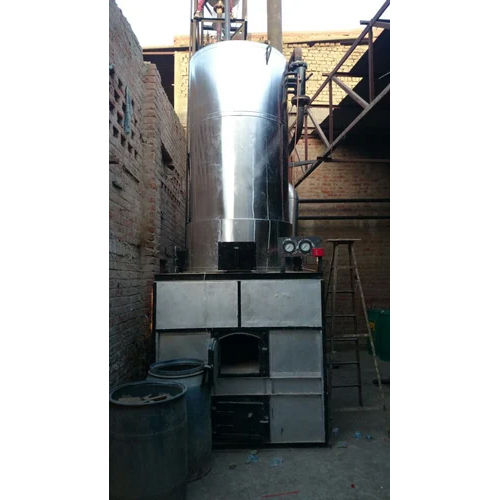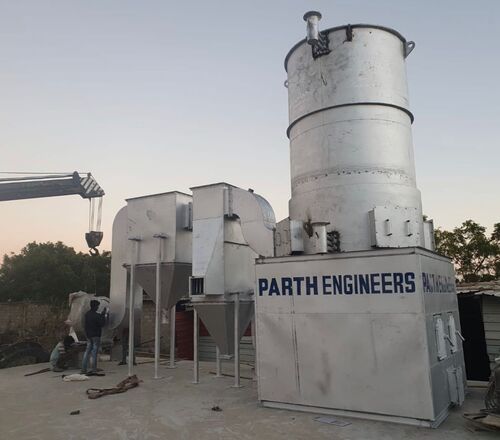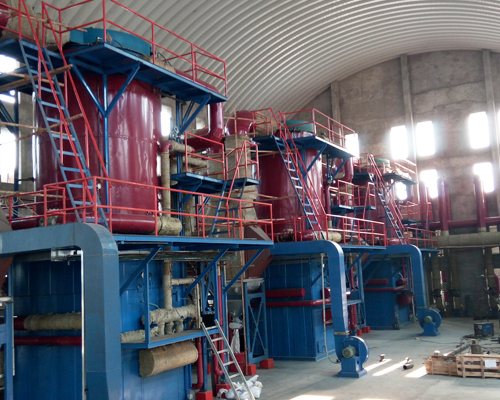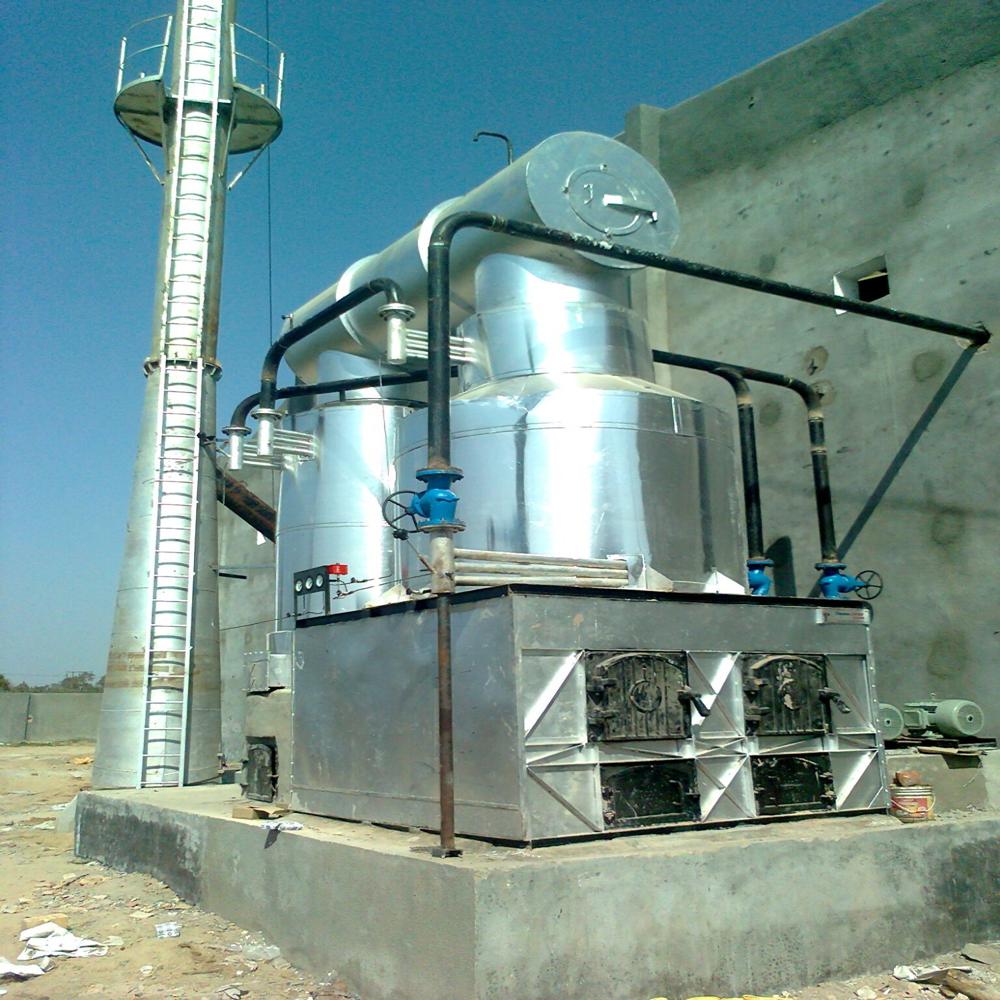|
Oil Fired - Thermic Fluid Heater
Product Details:
Oil Fired - Thermic Fluid Heater Price And Quantity
- 1100000 INR/Piece
- 1 Piece
- 400000.00 - 5000000.00 INR/Piece
Product Description
An Oil Fired Thermic Fluid Heater is a type of thermal fluid heater that uses oil as a fuel source to heat a thermal fluid, which in turn provides heat for various industrial processes. This type of heater is commonly used in applications where high-temperature heating is required, and it is more efficient than traditional steam-based heating systems. The heater uses a special heat transfer fluid (usually a high-temperature oil) to absorb heat from the burner and transfer it to the process.
Key Features of an Oil Fired Thermic Fluid Heater:
-
Oil as Fuel: The system uses fuel oil (usually heavy or light oil) to generate heat. This oil is burned in the burner, and the heat produced is transferred to the thermal fluid circulating inside the heater.
-
Thermic Fluid: Instead of water or steam, a specially formulated thermal oil is used to absorb and transfer heat. These oils are designed to operate at higher temperatures without breaking down, and they often have high thermal stability and low volatility, making them suitable for a wide range of industrial heating applications.
-
Heat Transfer System: The heated oil circulates through a series of coils or tubes inside the heater. The thermal oil absorbs the heat from the combustion process and then carries it to the designated process areas via a pump.
-
Temperature Control: Oil-fired thermic fluid heaters are designed to provide precise control over the temperature, allowing industries to maintain optimal processing conditions. The fluid is heated to the required temperature and circulated to the application.
-
Fuel Efficiency: These heaters are designed for optimal combustion efficiency. The oil burner is matched with the heaters capacity, ensuring that the system operates efficiently, minimizing fuel consumption while maximizing heat output.
-
Compact and Space-Saving Design: Oil Fired Thermic Fluid Heaters are often designed in a compact, space-saving manner. The heater can be installed in smaller spaces compared to conventional boilers or large-scale heating systems, making it ideal for installations with limited floor space.
Working Principle:
-
Oil Combustion: The oil is burned in the heater's burner to produce high-temperature gases. These gases transfer their heat to the thermal fluid (oil or other heat transfer media) inside the heater.
-
Thermal Fluid Circulation: The thermal oil absorbs the heat and circulates through the system, transferring heat to the desired process or application.
-
Heat Transfer: The heated thermal fluid is pumped to the process areas, such as reactors, dryers, or other heat-exchange units, where the heat is used for various industrial processes.
-
Return and Reheat: After releasing its heat, the cooled thermal fluid returns to the heater to be reheated and continue the cycle.
Applications:
Oil Fired Thermic Fluid Heaters are used across a wide range of industries, including:
-
Chemical and Petrochemical: Used in reactors, distillation columns, and other processes requiring precise, continuous heating.
-
Textile Industry: Provides heat for dyeing, finishing, and other textile treatments.
-
Food and Beverage: Used in cooking, frying, or other thermal processes in food manufacturing.
-
Pharmaceuticals: For drying or heating in the pharmaceutical production process.
-
Plastic and Rubber: Used to heat extruders, molding machines, and other processing equipment.
Advantages:
-
High Efficiency: Oil-fired thermic fluid heaters can achieve higher temperatures efficiently compared to steam-based heating systems. This leads to better performance and less energy consumption.
-
Higher Temperature Range: These heaters are capable of operating at much higher temperatures (up to 350C or more) than conventional steam boilers, making them suitable for high-temperature industrial processes.
-
Low Maintenance: Thermic fluid heaters generally have lower maintenance requirements compared to steam boilers because they operate at lower pressures and have fewer components exposed to extreme conditions.
-
Safety: They operate at lower pressures than steam boilers, reducing the risk of accidents or failures.
-
Compact Design: Oil-fired thermic fluid heaters are often more compact and require less installation space than traditional boilers or heat exchangers, making them ideal for smaller facilities or plants with space constraints.
Maintenance Considerations:
-
Oil Quality: Regular checks and maintenance are required to ensure that the oil used in the system remains clean and free of contaminants. The oil can degrade over time, and it may need to be replaced or treated periodically.
-
Burner Maintenance: The burner should be inspected for proper operation to ensure efficient combustion and fuel economy.
-
Thermic Fluid Monitoring: The thermic fluid must be monitored regularly for temperature stability and circulation efficiency.
-
Periodic Cleaning: The system may need to be cleaned periodically to remove soot, carbon, or any residue from the combustion process to maintain efficiency.

Price:
- 50
- 100
- 200
- 250
- 500
- 1000+
Other Products in 'Thermic Fluid Heater' category
 |
Parth Engineers
All Rights Reserved.(Terms of Use) Developed and Managed by Infocom Network Private Limited. |



